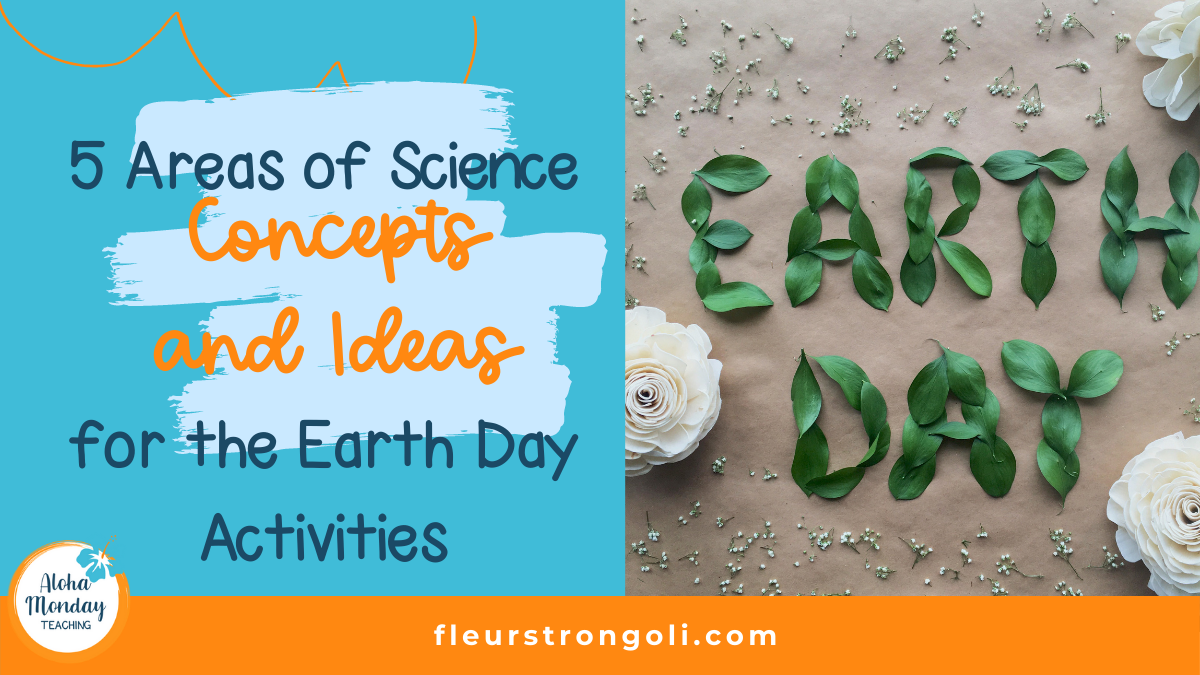5 Areas of Science Concepts & Ideas for the Earth Day Activities
What are the Earth Day activities you can do for middle schoolers? In middle school, we follow our curriculum, so how do we incorporate Earth Day into what we are already teaching? And how can you incorporate these Earth Day activities any time of year?
Before you start planning, download your free guide Plan Your Science Unit in LESS Time with 3 Simple Steps! Just click here or the image.
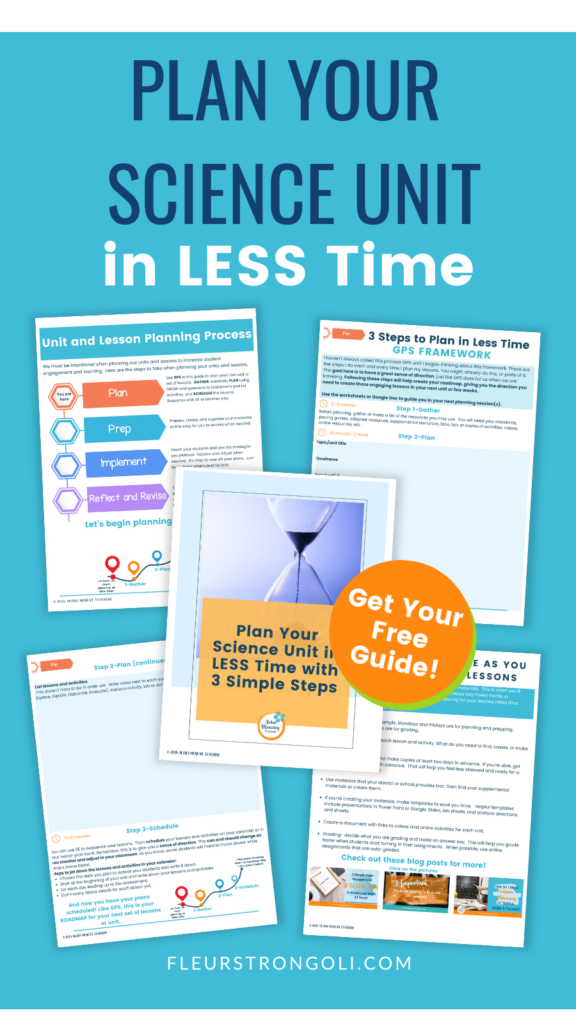
Disclosure: This post contains some affiliate links for your convenience. As an Amazon Associate I earn from qualifying purchases with no cost to you.
In This Post
We will go over Earth Day ideas for any concept you are teaching in Science. Earth Day activities for middle school science are easily integrated into any Science concept, as well as any other subject. I will share just a few ideas or topics for the areas of Life Science, Space Science and Physics, Chemistry, Earth and Oceanic Science, and Atmosphere, Weather, and Climate. These can lead to discussions, research, projects, or activities. And it would make more of an impact if students were able to take action in their communities.
What can students do for Earth Day?
We celebrate Earth Day on April 22 each year to promote environmental protection and to help our Earth. Students can do a variety of activities for Earth Day.
Some activities that students can participate in include recycling, planting trees, or cleaning up trash and debris in their communities. They can also learn about environmental issues and share what they learn.
Earth Day Ideas for Middle Schoolers
Here are some ideas that we can use with our middle schoolers with any content we are teaching in April. These are easily integrated with other Science topics, as well as other content areas, like Language Arts, History, or Math.
Life Science
Life Science includes anatomy, botany, ecology, zoology and more. This lends itself to the perfect time to incorporate Earth Day activities.
If you are teaching ecosystems, you can do activities about keystone species. How do we ensure that our keystone species are protected? What happens if a keystone species is extinct?
You can also have students create an argument to protect an ecosystem with the Protecting Ecosystems Project. Students are on the Ecosystems of Earth Committee and will choose an ecosystem. They will inform their audience, the Earth Day Board of Directors, of their ecosystem and how we can protect it.
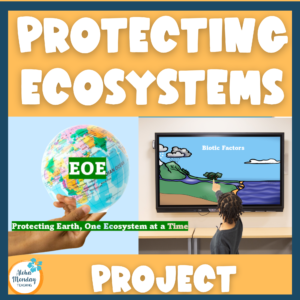
I am currently teaching cells, so I am going to talk about plant cells and vascular tissue. A simple lab you can do with kids involves celery and food coloring. After students see that the color travels up the celery, they can take the layers apart to view them in a microscope!
If you’re teaching about the human body , you can incorporate air quality to the respiratory system.
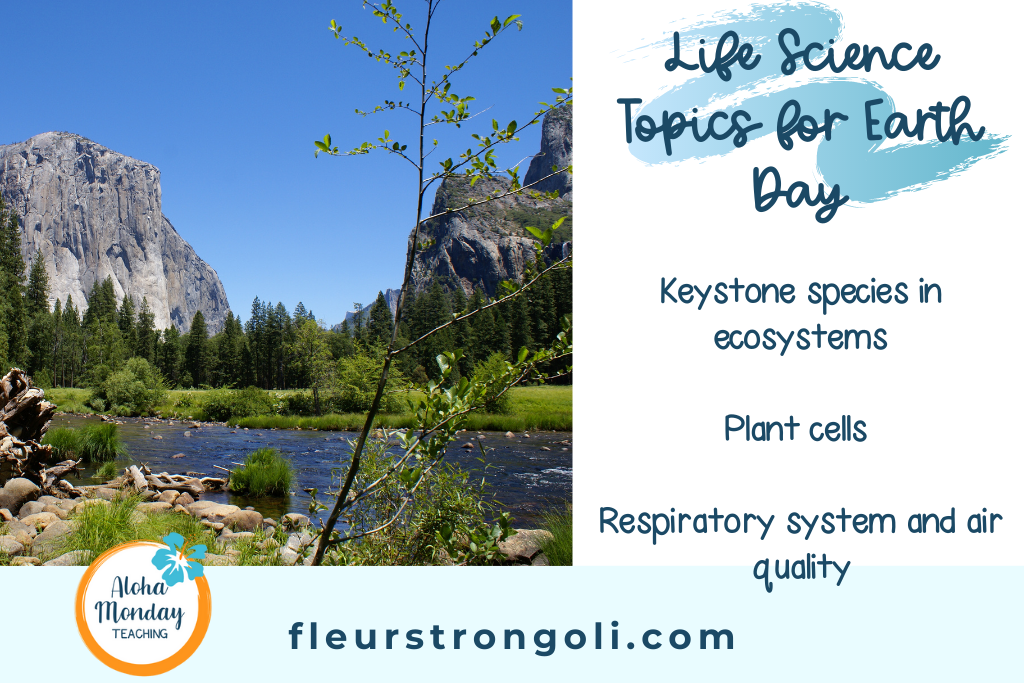
Space Science and Physics
For Earth Day, physics and space science go together. Why not talk about why the earth is the perfect distance from the sun, revolving around it on its axis to support life? What would happen if earth was a degree off its tilt? Or if it slowed its orbit or did not orbit at all?
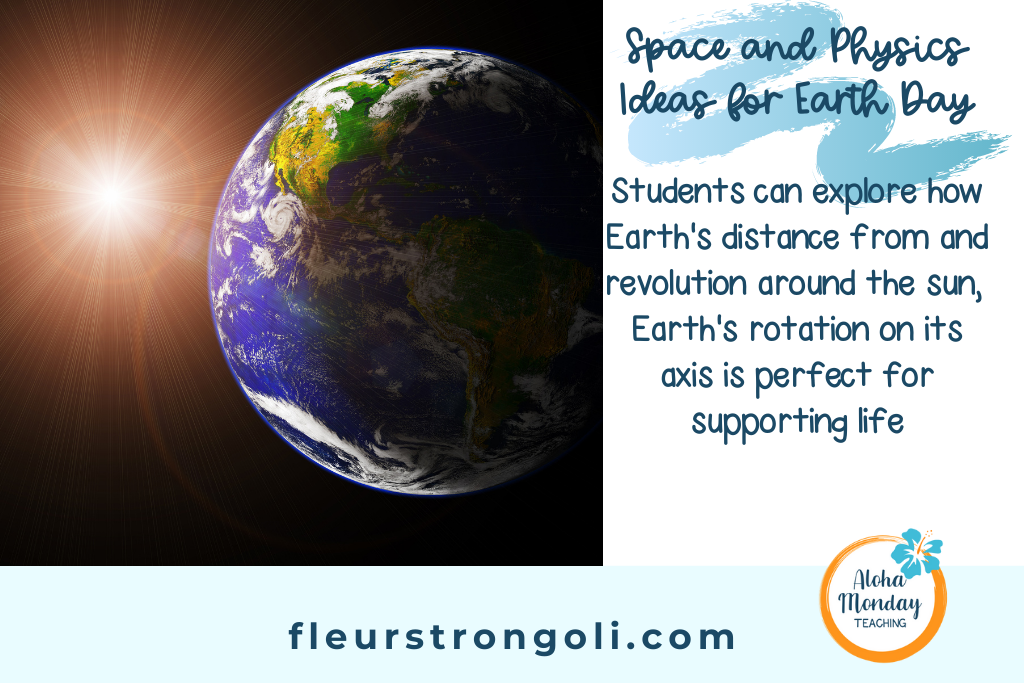
Chemistry
Using acids and bases, students could test the pH of sources of water to see how it impacts the environment. They can learn about acid rain and how it affects ecosystems. This will link to the topics of climate change and greenhouse gasses. It can lead to discussions and explorations to protect aquatic environments.
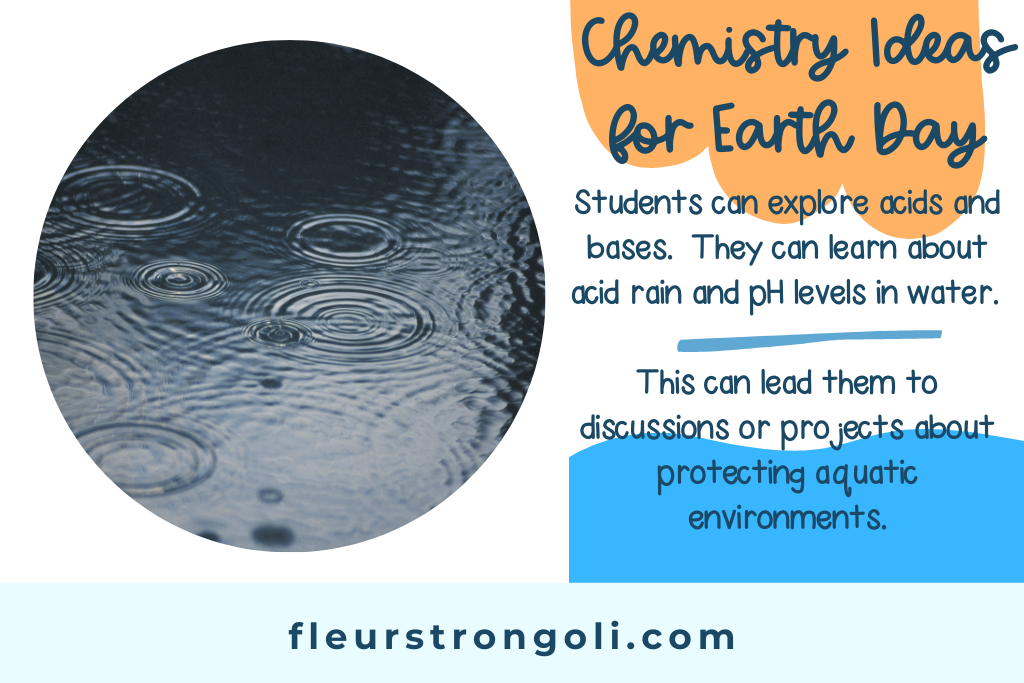
Earth and Oceanic Science
In oceanic studies, they can learn about the Great Pacific Garbage Patch in the ocean, El Niño or La Niña, or ocean temperatures. This is all important in our environment. When studying the ocean, students can also study ocean temperatures, or planning efforts to clean up and protect the ocean. Students living near the beach might want to plan an excursion to clean on the weekend.
With Earth Science, or landforms, they can celebrate Earth Day by learning about national parks or natural wonders on earth. They can visit them in real life, or take a virtual field trip! Some examples include the Grand Canyon or the Great Barrier Reef.

Atmosphere, Weather, and Climate
If you are in your Atmosphere unit, you will be able to incorporate anything about climate change or greenhouse gasses. Students can come up with ideas to help the environment and the atmosphere. You can discuss how to lower emissions, what is climate change, and what we can do for alternative energy.
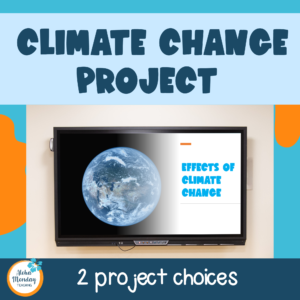
Give students an opportunity to learn more about climate change. In the Climate Change Project, students will learn how scientists study climate change, the history of climate change, greenhouse gases and their role in the atmosphere, and the effects of climate change on the biosphere. They will form solutions to mitigate the effects of climate change in this project.

A fun STEM or Engineering Design Process that your students would enjoy is A Town Covered in Dust. They will go through the Engineering Design Process to build a protective covering for a town that is constantly hit by dust storms. This is a lot of fun, and will teach your students about protecting a community while being considerate of what needs to come into and leave town.
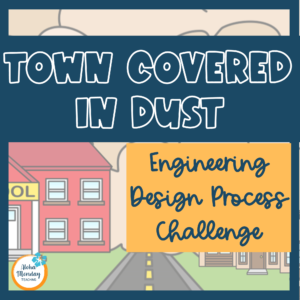
Wrap Up
Earth Day is designated every year on April 22. No matter where you are in your Science units, you can incorporate an Earth Day activity! We shared a few ideas for each area of Science- Life Science, Space Science and Physics, Chemistry, Earth and Oceanic Science, and Atmosphere, weather, and Climate.
Links
Town Covered in Dust The Engineering Design Process Challenge
Weather Activities, Projects, and Games These are my weather and wind activities, projects, labs, and review games on TpT that are great for Earth Day.
5 Daily Must-Do Strategies to Run Your Classroom Like a Pro
Read my blog post about engaging students
Your Turn
What are your favorite Earth Day lessons? Share on Facebook or Instagram!

